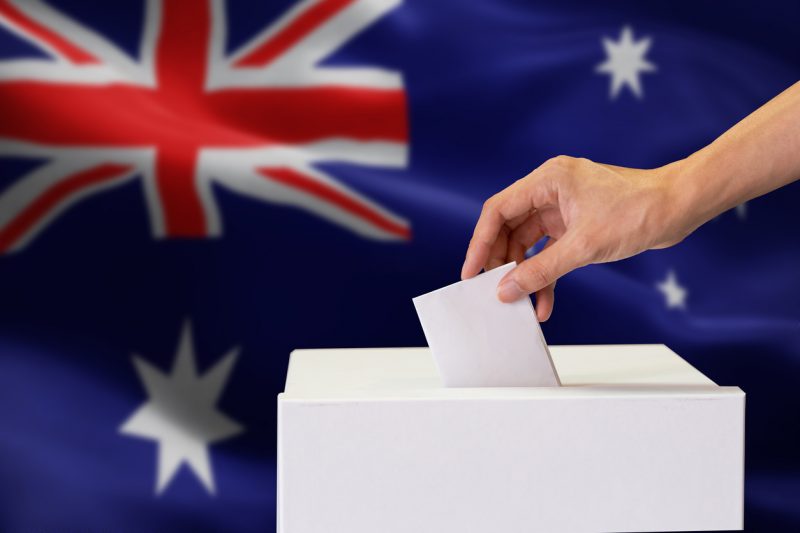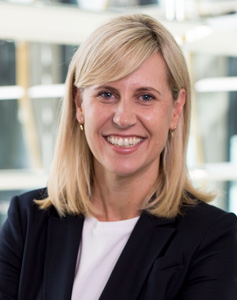Why were the ‘quiet Australians’ missed in the election pre-polls?
With the federal election result the latest in a series of global upsets – including the election of Donald Trump and Brexit – KPMG’s Amanda Hicks questions how pre-polls missed a huge chunk of voters.
The inaccuracy of polling data came as a big shock in the recent federal election. After consistent predictions of a Labor victory, with bookmakers even paying out in advance, the Liberal party retained their majority.
As late as Friday night, most major polls had Labor ahead 51-49 on the two-party preferred vote. This result mirrors a number of polling ‘upsets” globally over the past few years, from Trump’s election in the US to Brexit.

It’s clear polls are missing a cohort of conservative voters, which the Australian Liberal party has now named “the quiet Australians”. This conservative vote was also under represented in the 2015 UK General Election, the 2016 Brexit referendum and the 2016 US election. This group is getting harder to quantify using traditional polling methods.
There are several reasons why the polls can paint an inaccurate picture of the elections, and in particularly over the past weekend in Australia.
Increased disengagement
In research, we get much stronger levels of accuracy and participation when people feel engaged in the issues at hand. The current level of disengagement with political issues may be driving some of this under-representation. We often hear more strongly in research from those with the loudest, most vested voices. In this case, those that wanted change may have been more visible and audible in the polls than those content with the status quo
Fragmented audiences
Political opinion polling is a science that depends on extraordinary accuracy in terms of representative samples, at a time when inaccuracy is now too easy. There is no single way of reaching every Australian cohort in an opinion poll. This compares to several years ago, when almost everyone had a landline and would answer the phone to do a quick survey. Today, increasing numbers of Australians have internet-only landline connections, if they have a landline at all, and rely exclusively on mobile. Analysis of ACMA data predicts only 50% of Australian homes will still have a landline in 2021, down from 83% in 2011.
With the 2015 UK general election, the main problem with polling inaccuracy was determined to be unrepresentative samples. People who took part in polls did not accurately reflect the population as a whole.
Analysis of the 2016 UK Brexit polling has indicated that online polls seemed to perform better than phone polls. In total, 63% of online polls correctly predicted a Leave victory, while 78% of phone polls wrongly predicted that Remain would win. Some of the discrepancy may have been due to younger voters supporting Remain, but not bothering to vote. A key difference in Australia, of course, is that with voting being mandatory, the entire electorate is represented.
Asking the right questions
In the 2016 US election, the vast majority of polls predicted that Hillary Clinton would beat Donald Trump. One poll that did correctly pick Trump in the lead was the USC/Los Angeles Times Daybreak tracking poll. It allowed people to assign themselves a probability of voting for either candidate, rather than having to declare their preference with 100%. Different types of questioning – rather than the current, standard voting intention question – may end up providing greater insight. And we are now seeing discussions about whether social media data is a valuable predictor of voting intention.
So when it comes to research, there is increasing inaccuracy built in to the methodologies that takes time and money to overcome.
Political opinion polling, such as that we see in our media, is a relatively unique form of research with regards to the degree of accuracy required, and the level of public scrutiny placed on it throughout an election cycle. Commercial organisations recognise that insight and strategy is based on investing time and money in seeking viewpoints from a variety of data sources to ensure all views are accurately represented.

Amanda Hicks is partner at KPMG Acuity. This article first appeared on the KPMG Newsroom blog


Social media picked up the real trend. (I can’t recall the name of the firm, but they called the result correctly, based on social ‘noise’.)
The tactic for Brexit and for Trump by the conservative side was to say that they were going to lose. (This was supported in a major way by Murdoch in the UK (The Sun and The Times) and in the US (Fox News being such a force of sorts. This made sure the conservative agenda gained every last vote and also potentially threw off people from voting directly against them, or at all.
Newspoll is owned by Murdoch who wanted the LNP in.
Conspiracy? Nope, like anything owned by Murdoch; you need to take it with a pinch of salt and ask; what’s in it for the Murdoch’s? (An angle.)
@Angle what’s in it for the Murdochs? A chance to buy the ABC. watch & wait, watch & wait.
Murdoch; we know their agenda.
Stokes; as above and I bet Westrac (he owns it) picks up a shed load if contracts from…..
Gina, Clive et al, when their coal mines are ago.
What do the above have in common? Erm? Billionaire elites? Erm? Yep.
Amazingly, not all, however many of their voters will be the ones hardest hit. Madness.
Elites? Murdoch was born into $ as was Packer. Stokes started Golden West Network in Bunbury WA and did it all himself as I recall.
Landline phones. Many don’t own them. Many who do never ever answer them. Few who answer them would stay on the phone once they realise its a robo-call.
People that participate in robo-surveys don’t reflect the views of most voters.
… having been involved in research surveys of various sorts throughout my own career, I know it all comes down to the questions asked. Based only on the comments sections of various newspapers (and therefore unscientific in the extreme) it would appear that many of the questions pre-supposed a viewpoint (based on that of the people posing the questions) rather than being sufficiently open-ended to garner a clear and unbiased picture. An analogy: rather than ask the question “How often do you eat ice cream ” instead it was asked “Which flavour of ice cream do you prefer”. The results of the second question would be useless in determining whether it was worth bringing a new ice cream brand into the market if that was the outcome sought.
Interested to know your experieces of the participants themselves. One the outside I expect that those with the time to particpate in a survey would not really reflect the population broadly. For example I can’t imagine a parent having the time, or any one full time employed really…What was you experience? Broad spectrum or specific set of people?
line, like most involved in television programming, both broad and specific, depending on what we were after at the time. Participants? sometimes thrown out to the general public (eg via newspaper surveys), sometimes relying on the panels or phone methodology developed by a research company or in-house researchers. In all cases, the wording and way the questions were posed had a dramatic effect on the outcomes.
Who would want to admit voting for such an incompetent government? Even to a stranger.
Quote:
‘In this case, those that wanted change may have been more visible and audible in the polls than those content with the status quo’.
I disagree. The ‘Quiet Australians wanted change every bit as much as the socially progressive. But, the change they wanted most was to be able to express their views without being attacked and insulted by ‘the progressives’ for them.
One thing that hasn’t come up in any of the recent articles about political polling (sorry to single your one out Amanda) is that elections are won by the party with the most seats, not the most votes.
So while the majority of Australian might feel that Labor should be in government (according to polls), it all depends on where you live and how many of your neighbours feel the same way.
If you have 3 electorates, one large one where Labour has a resounding win and 2 smaller ones, where the Coalition just scrape in, the end result is still 2 seats to the Coalition despite more votes heading to Labour.
This is different to events like Brexit, where the end result does come down to the popular vote, but similar to events in the states, where people like George Bush can be in power despite not receiving the majority of the votes.
I saw stats at about 60% counting that showed only 30k votes difference across the whole country, so that definitely seems to apply.
it’s an issue with our electoral system, which is one of the least representative in the world.
however, if you look at Victoria, the Coalition actually received more votes than Labour but received 50% less seats
I would say Britain and America are worse… but ours definitely needs improvement still.
The coalition is 2 parties in Victoria and received a swing away from both parties
https://tallyroom.aec.gov.au/HouseStateFirstPrefsByParty-24310-VIC.htm
Greens preferences usually flow to Labor so by that token the “LAB/GRN” coalition would have received far more votes. The Nats don’t contest metro seats so it doesn’t make sense to add them together
and Labor received a higher 2PP vote at 52% at last count so it would stand they won with a bigger margin.
I worry that all the polls wound up on the same story. Caucus to good is valuable. Caucus to bad is awful. Why wasn’t there a spread of interpretation of the data?